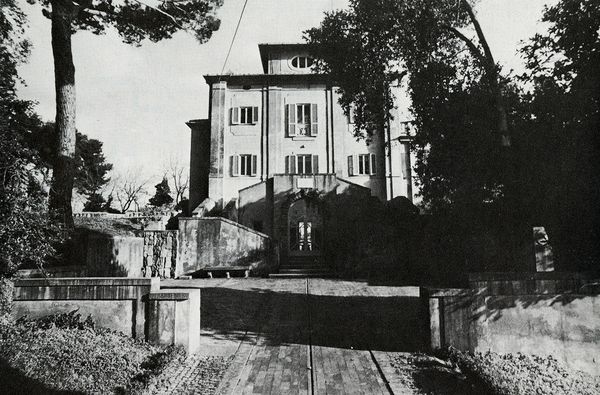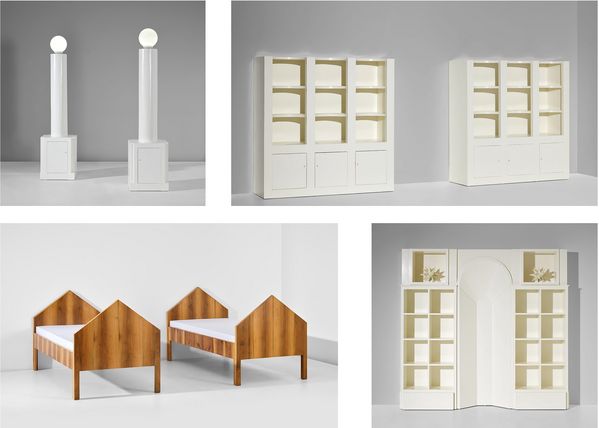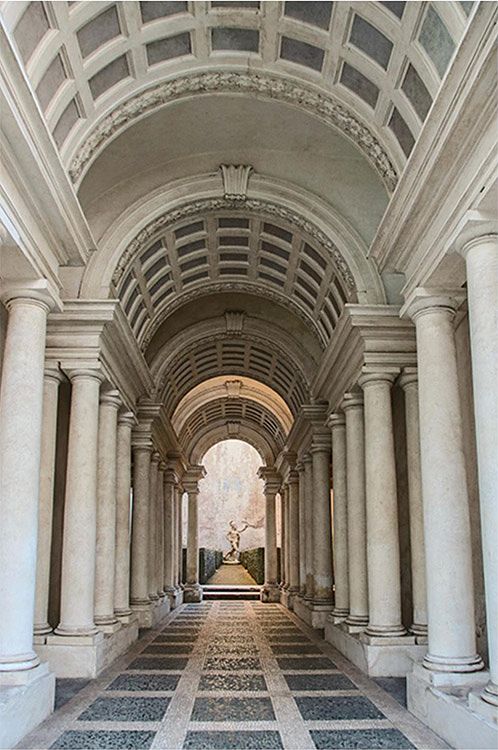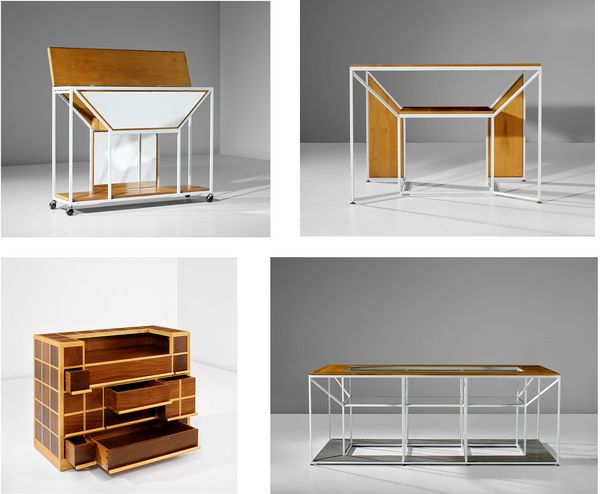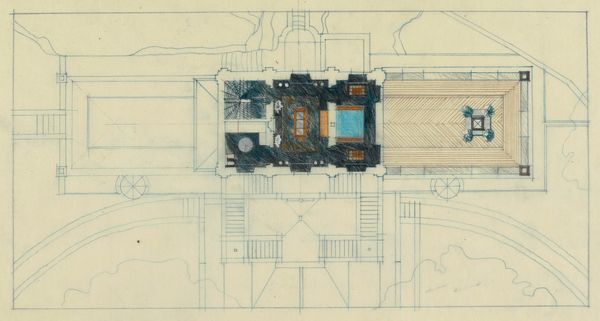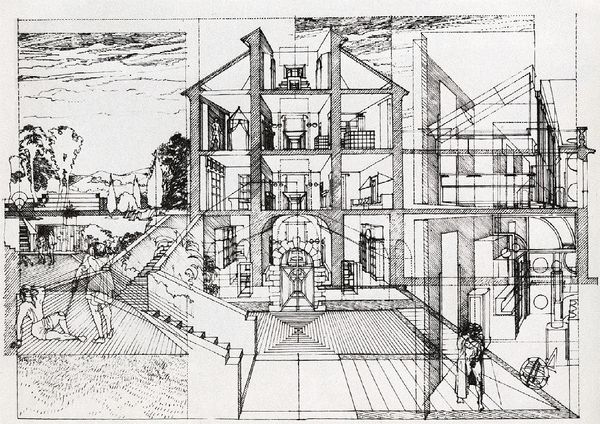Villa of Cardinal Chigi in Ariccia, near Rome. Photo: © Patrizia Nicolosi.
A selection of works designed for the restoration of the Villa of Cardinal Chigi by the Roman Architects and Urbanists Group (G.R.A.U.) feature in our Design auction in London on 31 October.
By Stefano Poli
The work of the Roman Architects and Urbanists Group (G.R.A.U.) can partly be understood within the context of a rejection of the excessive linguistic and methodological homogenization in architecture associated with the so-called International Style. Especially in Italy, between the 1950s and 1960s, there was a critical attitude towards the recent international tradition of modern architecture. Buildings such as the Torre Velasca by Studio B.B.P.R (Milan, 1955–57), Ignazio Gardella's Casa alle Zattere (Venice, 1958–62), the Neoliberty architecture of Roberto Gabetti and Aimaro Isola in Turin, as well as the crucial work of Bruno Zevi and the Association for Organic Architecture (APAO, founded in Rome in 1945), became vehicles for both a new focus on historical and urban aspects and the search for an alternative expression of modernity. In particular, the attempt to establish a synthesis between the city's historical fabric and new architecture, considering history as the very substance of contemporary design, led to a debate that flared up in the pages of the English magazine The Architectural Review with a scathing article by Reyner Banham, to which Ernesto Nathan Rogers responded with a firm sense of irony in Casabella Continuità.
G.R.A.U. designs for the Villa of Cardinal Chigi in Ariccia near Rome in the present auction (from top left): Lot 93 Pair of custom floor lamps with cabinets, circa 1967, Lot 98 Pair of custom bookcases, circa 1967, Lot 96 Pair of custom beds, circa 1967, and Lot 91 Custom bookcase, circa 1967. Design London.
On one hand, this historical and critical context partly frames G.R.A.U.’s work. On the other hand, one must place the cultural context of the group within its unique Roman setting. The acronym declared the group's identity, founded on the inseparability of architecture from urban planning and the Roman character of the association. The inextricability between these realms is evident in the restoration project of the 16th century Villa of Cardinal Chigi in Ariccia, near Rome (executed in 1967), from which the present furniture originates.
Giovanni Borromini’s perspective corridor at Palazzo Spada, Rome. Photo: Borromini © Laudibi | Dreamstime.com.
The history of Western architecture, guided by perspective geometry and adorned with references to examples of ancient and Baroque Roman architecture, permeates the entire project, aligning modifications and reconstructions according to an ideal symmetrical plan. The oldest part of the building regains centrality compared to later additions, while the urban context determines the visual axes, recalling the landmarks of Palazzo Chigi and the dome of the Church of Santa Maria Assunta by Gian Lorenzo Bernini.
G.R.A.U. designs for the Villa of Cardinal Chigi in Ariccia near Rome in the present auction (from top left): Lot 94 Pair of custom console tables, circa 1967, Lot 97 Custom desk, circa 1967, Lot 95 Pair of custom chests of drawers, circa 1967, and Lot 92 Custom table, circa 1967. Design London.
Similarly, the furnishings are defined by the pervasive perspective design that the architects elaborate for each room. In the drawings, imaginary Cartesian lines form a grid within the interior spaces, resembling a deliberate homage to Renaissance perspective studies, accompanied by exuberant references to Michelangelo. In certain portions of the interior space, this abstract grid materialises, moving away from the two-dimensionality of the paper to give life to the shapes and proportions of the furniture, which appear as a three-dimensional transposition of it.
A drawing of the main floor plan of Villa of Cardinal Chigi in Ariccia, near Rome. © G.R.A.U./ Les architectes du projet. Photo © Centre Pompidou, MNAM-CCI, Dist. RMN-Grand Palais / Philippe Migeat.
These furnishings clearly exhibit their "architectural" character, emphasising the inseparability of the furniture design from the spatial design that contains them, implicitly engaging with the emerging divide between industrial design and architecture. For Gabriella Colucci and Franco Pierluisi, such a distinction was evidently unacceptable, as it was foreign to the great Italian tradition of design and practically inconceivable.
Architectural drawing of Villa of Cardinal Chigi in Ariccia, near Rome. © Alessandro Anselmi and Gruppo Romano Architetti Urbanisti, G.R.A.U. Isti Mirant Stella: Architetture 1964–1980, Rome, 1981, p. 110.
Discover More from Design, London >
Recommended Reading
Signature Modern Treasures by Jean Royère >
A Masterpiece by Josef Hoffman, Cofounder of the Wiener Werkstätte >
Incisions into Space: Hans Coper's Cycladic Pots >
The Personal Pots: The Jane Coper and Cyril Frankel Collections >
